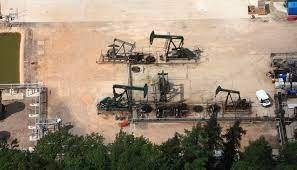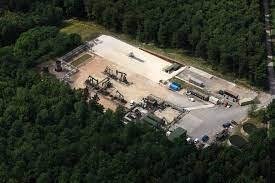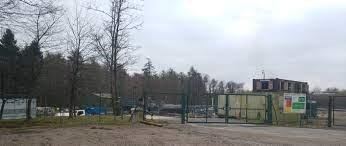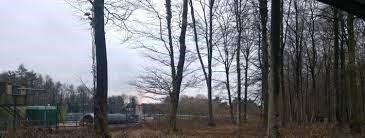A FRACKING company has been told it may continue to dump radioactive waste in the South Downs National Park despite campaigners’ objections.
IGas will be allowed to continue pumping waste, despite claims it will turn the national park into a toxic waste dump.
The company, which is also trying to set up hydraulic fracturing wells, has obtained an environmental permit to feed radioactive water back into the South Downs from oil and gas sites.
IGas has said it will stop bringing waste from other sites to be dumped in the South Downs while talks continue with the national park authority.
 There are fears for the future of the national park
There are fears for the future of the national park
The authorization, granted by the Environment Agency (EA), allows IGas to inject up to 80 m3 per day, or more than 17,500 imperial gallons.
If IGas injected the maximum each day, there would be enough fluid to fill an Olympic-size swimming pool in about a month.
Opponents have criticized the move, which will inject oil production fluid into a borehole at IGas’s Singleton site near Chichester.
The water reinjection was linked to seismic activity in the United States, activists said.
Philip Maber, who lives nearby the site, said: “This operation seriously threatens our chalk aquifer with contamination forever and is also the biggest source of carbon emissions in West Sussex.
“I feel guilty and frustrated at how little our community and our country understand the urgency of change.”
The Weald Action Group said: “We are deeply disappointed.
“The site is now officially a hazardous waste landfill.
“Our chalk aquifer is vulnerable and the water and environment of the South Downs National Park must be protected and not polluted.”
 Fracking opponents cite a range of environmental concerns
Fracking opponents cite a range of environmental concerns
The permit allows IGas to dispose of formation or production water that rises to the surface with gas during oil extraction.
At Singleton, it could contain naturally occurring radioactive material, known as NORM.
Disposal of formation water is a major cost to the oil and gas industry and often involves regular and frequent trips from tankers to waste treatment facilities.
Under the permit, the formation water to be injected into Singleton can come from the site itself and from other oil wells in southern England.
Dumping has existed in Singleton since 1996.
This was part of a national review of permits at older oil and gas sites under environmental regulations first introduced in 2013.
The EA said: “We are convinced that the permit will ensure a high level of protection of the environment and human health and that the activities will not result in any significant pollution of the environment or of human health.”
The liquid wastes would be injected at a depth of approximately 800 m into the Ashdown Formation, layers of sandstone, siltstones and mudstones.
 Singleton is one of the UK’s largest onshore oil producers
Singleton is one of the UK’s largest onshore oil producers
The EA said the water in the Ashdown Formation was saline and unsuitable for agriculture, industrial supply or consumption.
It would not support springs, streams or wetlands and the formation could not be used for geothermal energy, the EA said.
Opponents of onshore oil and gas operations raised concerns about IGas’ plans during a public consultation last year.
The Chichester region is heavily faulted and has been the center of many small natural earthquakes, dating back to the 18th century.
They also said the operation threatened the quality of the water in the chalk aquifer.
In response, the EA said, “There is no immediate apparent viable path to shallower aquifers.
“We are therefore confident that the proposed discharge in the Ashdown formation will not impact shallower aquifers.”
The South Downs National Park Authority, which handles planning applications in the area, recently told IGas it does not have a building permit to import liquid waste from other sites for disposal in Singleton.
The company said it “didn’t necessarily agree.”
 IGas defended its use of the Singleton site
IGas defended its use of the Singleton site
IGas said there had been no change in operations at Singleton or in the makeup of the water.
Singleton was the UK’s second largest onshore oil producer in 2020, according to data from the Oil and Gas Authority.
It extracted 2.4% of British onshore oil, behind the leading producer, Wytch Farm, with 84.3%.
Water cutoff – the proportion of formation water in the total volume of fluid produced at a site – tends to increase with the age of the wells.
More about this article: Read More
Source: www.theargus.co.uk
This notice was published: 2021-06-24 14:11:52
